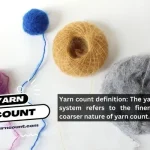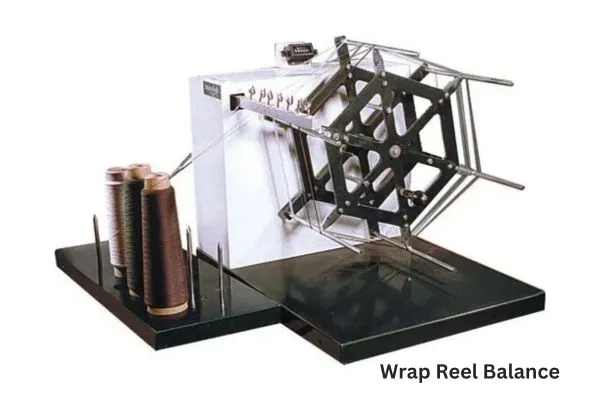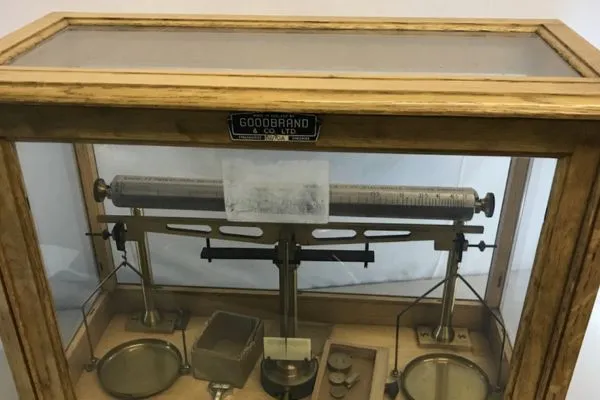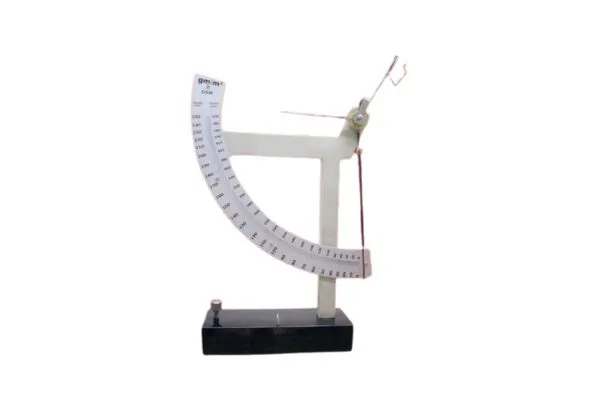Whether the yarn you deal with regularly is thin or coarse depends on the yarn count. This system is just a subpart of the Indirect Counting System. There is another name for the yarn count Linear Density. In Textiles, the yarn count system characterizes the basic component in ensuring quality.
What is Yarn Count System?

Yarn count definition: The yarn count system refers to the fineness and coarser nature of yarn count. Textile yarn count is also a part of the popular indirect counting system. Another mode of counting system- Direct- consists of multiple numbering opportunities. Besides, yarn count indicates the length of each unit mass of any yarn. The place and the material used for preparing any yarn measure the yarn count number.
What do mean by Yarn Count?
“Yarn count, or simply count, refers to the numerical expression indicating fineness and coarseness. The fineness or coarseness is nothing but a yarn’s thick and thin nature. While producing yarn, the quality of the yarn matters. It depends on the yarn count. The yarn count is a numerical expression of the linear density. Here, linear density is measurable as the diameter to which any yarn gets spun.
Yarn count begins with the term named ‘bundle.’ The bundle is a ball of yarn, sometimes recognizable as a hank for a greater production facility. A hank is a terminology of the English Counting System.
So, yarn count according to a hank is = The length of 840 one yard
After selecting the exact number of yards based on the counting system, the yarn becomes useful for weaving after being labeled and transferred.
Types of Yarn Count
The yarn Count system or yarn count measurement system can be categorized into two groups. They are:
- Analytical System
- Instrumental System
1. Analytical System:
Analytical systems consist of other processes based on a few calculations. Most Direct and Indirect Systems are categories or types of Analytical systems.
2. Instrumental System:
The instrumental system refers to the process of yarn count system where different instruments get measured with no calculation needed. In this process, getting the yarn count directly is possible. This system has several yarn count measurements as follows:
i. Beesley Balance:

When cotton yarn is available in short length during the removal from any fabric, this yarn count measurement applies here.
ii. Wrap Reel Balance:

The wrap reel is measurable in this system. In the case of cotton, the wrap reel is 1 yard whereas the required yarn seems to be 120 yards.
iii. Stubb Yarn Balance:
It works based on the fixed length and weight. The number of weight yarn that is fixed gives the actual yarn count.

iv. Quadrant Balance:
A type of typical balance or an instrument for direct reading. The yarn count is measurable directly from this type.

In this article, we will be discussing direct and indirect yarn count systems as part of the analytical system of yarn count measurement in the Textile.
i. Indirect Yarn Count System
The Indirect system of yarn count refers to the system where there is a fixed weight (mass). Here, the count of yarn is measurable with the calculation of the length of the definite weight. Here, the yarn count is the number of units of length per weight yarn. So, the count number is the indication of the length of each unit mass or weight of the yarn. In the indirect yarn count system, the higher the count is, the finer the yarn becomes. Aiming for a higher count under a similar density is a wise decision. But the lower yarn count defines the thickness of the yarn.
Usually, this indirect system is a widely measurable yarn count system for cotton yarns. Even, there is a formula,
N= (L × w) / (l × W)
Here, N = The Yarn Count
L= The length of the given sample
W= The unit of weight
W= The weight of the given sample
l= The Unit of the length
The most Common Indirect Systems are the following:
- English Cotton Count (Ne)
- The Metric Yarn Count System (Nm)
- Cotton Yarn Count
- Worsted Count (NeK)
- Woolen Count
The Description of each commonly used:
1. English Cotton Count (Ne)
In English Cotton Count, the yarn count refers to the number of hanks. The number of hanks is 840 yards for each pound. Hasan, M. T. (2017).
Formula:
Length (m) X 1 kg
Metric count = ………………………………………
1000m X Weight (kg
For instance, yarn count 40 Ne means that around 40 hanks are there per 1 lb or each pound of the yarn length per weight. Since, in 40 hanks, each hank consists of 840 yards of any yarn.
Simply, If the yarn follows the English count system, the yarn will have a count of 40 Ne or 40 hanks of the yarn that weigh around 1 pound every time.
(40 x 840) yards= 33600 yards of yarn weighing 1 pound,
So, the yarn count would be 40 Ne.
** Ne count has another way of expression: (‘s)
2. Metric Yarn Count System (Nm)
Metric yarn count system refers to the yarn count as defined as:
The number of hanks of 1000 meters per 1kg
If we use a similar example of the English count yarn system, we get:
yarn count 40 Nm= 40 hanks of 1000 meters per 1 kg
Here, 40 hanks of the yarn would weigh 1 kg.
3. Cotton Yarn Count
Cotton yarn refers to the number of hanks where there are 840 yards presented in a 1-pound weight of yarn. Here, the cotton yarn count follows the English count system, denoted by Ne.
The equation of the cotton yarn count system is in the following:
Length in hanks of 840 yds
Count, Ne =—————————————————–
Weight in lbs
For instance, if the given yarn sample is 3000 yards with a weight of 0.10 lb, the yarn count would be:
Count, Ne = (2000 X 1) / (0.10 X 840) = 23.80 Ne.
4. Worsted Count (NeK)
The worsted count of the indirect system refers to the number of hanks measuring 560 yards per 1 pound of the yarn. If the yarn count is 40 NeK, there are 40 hanks of 560 yards per 1lb (pound) of the yarn.
Here, the yarn count refers to the number of hanks of 256 yards each pound. For example, a woolen yarn count of 40 means there are 40 hanks of 256 yards per 1 pound of the yarn.
ii. Direct Yarn Count System
The direct yarn count system refers to the process where the count measurement happens based on the number of weights in a specific unit of length. The direct weight system is also known as the fixed-length system. Here, the yarn count number is proportional to the nature of the size as well as the bulkiness of the yarn. A finer yarn means a lower count number, whereas a coarser yarn means a higher count number. For measuring yarn count for silk and jute, this specific yarn count system is applicable. Usually, the length of the yarn remains in a fixed number. But the mass of the yarn is variable based on the fineness.
6. Different Direct Yarn Count System:
- Tex
- Denier
- Pound per Spyndle/Jute Count
- deciTex (dTex)
- miliTex (mTex)
- kiloTex (kTex)
Description of the Each of the Direct Yarn Count Systems:
1. Tex
Tex number refers to the weight present in 1000 meters of the yarn where the mass is measured in grams. Here, the yarn length is fixed. Tex is nothing but the weight in grams of the unit of length. The equation for determining the yarn count is (Kiron, 2021):
Weight in grams
Tex = ………………………………………
Length in 1000 meter
Sample weight in gm X Unit length (1000m)
Or, Tex = ……………………………………………………………………………………
Sample length in meter
The Tex system is the universally used process of yarn count. It comes from the International Standard Organization with a few textile scientists, manufacturers, and technologies. For instance: Yarn counts 40 Tex means there are 40 grams of yarn per 1000 meters of the yarn mass per length.
2. Denier
The yarn count refers to the weight in grams of 9000 meters of the yarn. It is like a tax system with different unit lengths. So, the equation is similar with a different digit (Kiron 2021):
Sample weight in gm X Unit length (9000m)
Den = …………………………………………………………………………….………
Sample length in meter
For instance: Yarn counts 40 denier means there are 40 grams of yarn in every 9000 meters of the yarn.
| The Name of the Count System | Unit of Length | Unit of Mass |
| Tex | 1000 meter | Number of grams |
| Denier | 9000 meters | Number of grams |
| Pounds Per Spyndle | 14,400 yards | Several lbs. |
| deciTex (dTex) | 10,000 meters | Number of grams |
| miliTex (mTex) | 1000 meter | Number of milligrams |
| kiloTex (kTex) | 1000 meter | Number of kilograms |
Table 1: Direct Yarn Count System in the Unit of Length and Mass (M. T. Hasan, 2017)
3. Pound per Spyndle/Jute Count
The yarn count refers to the weight in pounds of 14,400 yards of yarn. For instance, the yarn count of 30 Per Pound Per Spyndle defines that there are 30 lbs of yarn per 14,400 meters of yards of yarn.
4. deciTex (dTex)
The yarn count refers to the weight in grams of 10,000 meter. For example, if the yarn count is 40 deciTex, it means there are 40 grams of yarn Per 10,000 meters of that yarn.
5. miliTex (mTex)
The yarn count refers to the weight in milligrams of 1000 meters of the yarn. For instance, the yarn count of 40 miliTex is just 40 milligrams of yarn per 1000 meters of yarn.
6. kiloTex (kTex)
In the kiloTex system, the yarn number is the weight in kilograms of 1000 meters of the yarn. For instance, the yarn count is 40 kiloTex means there are 40 kilograms of yarn in every 1000 meters of that yarn.
Yarn Count: Direct & Indirect System
Two major types of yarn count have been discussed before. They are:
- Indirect Yarn Count: English, Metric, Worsted, etc.
- Direct Yarn Count: Tex Denier, Pounds per Spyndle, etc.
3. Material-based Count
a. Cotton Yarn Count: The Indirect Yarn Count
In the yarn count of the cotton, the English system and the metric system are applicable. As we already know, the English system means the yarn with 1 pound weight and around 840 yards in length. Both refer to the 1 count as a standard. Meanwhile, the metric system is the yarn of 1-kilogram weight and 1 km length to be the 1 count. The count of the cotton yarn is available in even numbers like 20, 40, 60, and sometimes 32. The uneven number of cotton yarn is for special purposes: 21 or 65. The general tendency of the cotton yarn count is that the thickness shifts towards the fine count each year as the cotton fabric starts to improve (Textile-Tutorials, 2021).
b. Polyester Yarn Count
Polyester yarn count is measurable in the denier. Denier is the direct yarn count system where denier is the weight of each unit length. It is the number of weights of 0.05 grams for each 450-meter length. (Marlen Textiles | Feb 2016: Polyester 101, n.d.).
c. Lycra Yarn Count
For lycra yarn count, there is 1X1 rib and 2X2 Rib.
The formula for 1X1 Rib is:
Yarn Count = (-0.119) GSM + 59.12
[GSM= Sample number]
Lycra 2X2 Rib:
The formula for yarn count is:
Yarn count = (-0.108) X (GSM) + 56.62
[GSM= Sample number]
d. Spandex Yarn Count
Spandex yarn count means 8 to 1880 dTex. So, there is a use of deciTex. The weight is in grams of 10,000 meters of yarn.
e. Rayon Yarn Count
Rayon, being a natural kind, has a yarn count between 30s to 40s.
f. Denim Yarn Count
Denim yarn count ranges in yarn count from Ne 12.5 to Ne 30.0. All the denim yarns are ring spun. But the count ranges of denim warp yarns remain from 50 to 90 tex. Denim yarn follows the system of direct yarn count. Here, tex is the weight present in 1000 meters of the yarn where the mass is measured in grams.
g. Filament Yarn Count
Filament yarn is the composition of a number of filament fibers. To measure the filament yarn count, a denier is important. Here, to get denier, there is a use of a weight per unit length system. Meanwhile, the fabric weight number remains constant. 9000 meters of yarn means 1 gram or 1 denier. The bigger, the heavier- this principle applies to the yarn. For example, the denier of the yarn 75 means, there are 72 filament fiber strands.
h. Wool Yarn Count
The Wool yarn count refers to the number of hanks that have a length of 256 yards in 1 pound of yarn. This count is also popular as the Woolen count or YSW. So, YSW is the expression of the count of Woolen yarn.
i. Viscose Yarn Count
Viscose yarn count is available in 36/1, 6/1, 20/1, or 24/1, even, and odd numbers. The direct yarn count system applies here.
j. Lurex Yarn Count
Lurex is a Polyester materialled yarn that is applicable in making textiles, embroidery, or knitting. The yarn count of the Lurex is 20 and 40.
k. Pique Fabric Yarn Count
Like Lycra, the correct format of the yarn count for Pique fabric is:
Yarn count = (-0.146) X (GSM) + 57.16
l. Sweater Yarn Count
The sweater yarn count differs or varies from gauge to ply. 1.5 gauge to 7 gauge is the optimum gauge calculation system. Depending on the ply number, the yarn count is identifiable. For instance: For 3-gauge Sweater fabric, the ply number is 6 to 8 plies.
m. Silk Yarn Count
Silk yarn count follows the metric count system or the indirect yarn count system. 1 meter or 39 inches of yarn weighs 1 gram, and 1-meter counts for yarn.
n. Acrylic Yarn Count
Acrylic is popular for application in knitting textiles. So, the pattern of the yarn count remains 28/2, 32/2, or 50/2. For instance: 30/2 means, there is a two-ply thread. Whether the yarn is thinner depends on the count number. The 30/2 thread is thinner than the 28/2.
How to Calculate Yarn Count?
Counting yarn means getting acknowledged for the durability of the yarn. Apart from durability, yarn count measures the strength of the yarn, whether the fabric provides comfort or not. Estimation does not go with the calculation of yarn count. In that case, both the direct system and the indirect system tell you how the yarn involves different routes to become fine or coarse depending on the material. There is a specific formula to calculate the yarn count. This is:
. 590.5 x 16.1
Yarn Count (In General) =——————————-
S.L. x Grey G.S.M.
| Numbering System | Unit of Length (l) | Unit of Weight (w) |
| English cotton count, Ne | 840 yards (yds) | 1 pounds (lb) |
| Metric Count, Nm | 1000 Meters/1km | 1kg |
| Woolen Count (YSW) | 256 Yards | 1 Pound (lb) |
| Woolen Count (Dewsbury) | 1 Yard | 1 Ounce (oz) |
| Worsted count, Nek | 560 Yards | 1 Pound (lb) |
| Linen Count, NeL | 300 Yards | 1 Pound (lb) |
Apart from this formula, there is another table to follow (Hasan, 2021):
Table: Numbering System in terms of Unit of Length and Unit of Weight
The Importance of Count System in Textile
Yarns come up through the section of the circular cross. They do not easily get deformed in the process of measuring. Because Measuring yarn using the count system is complex. The only way of acceptance is to indicate or identify the thickness of the yarn. This identification will lead to use of linear density. Moreover, the yarn count system is the expression between the unit of length and the weight of yarn. Both reflect the diameter of the yarn. Once for long staple yarns, technology played an important presence in making yarn out of any material like wool. At that time, Hank was a defined term counted as 560 yards. Since textile materials are sold based on weight (mass), it is natural to know the count system in expressing yarn from the thickness perspective.
Conclusion
Gone are those days when a hank used to operate as the yarn count for any application in industrial sectors. Yarn count is a significant part of the textile industry as production cannot run without its help. From product costing to identifying durability, yarn count systems play an integral role in the textile industry.
References (APA):
- Hasan, M. (2021). Yarn Count in Direct System and Indirect System. Textile Calculations. https://www.textilecalculations.com/yarn-count-in-direct-system-and-indirect-system/
- Kiron, M. I. (2021). Yarn Count Measurement System. Textile Learner. https://textilelearner.net/yarn-count-measurement-system/
- Hasan, M. T. (2017). Systems of Yarn Count Measurement. Textile Study Center. https://textilestudycenter.com/yarn-count-measurement/
- Textile-Tutorials. (2021). What Types of Yarn Count in Textiles? | Count of Cotton Yarn. Textile Tutorials. https://textiletutorials.com/what-types-of-yarn-count-in-textile-count-of-cotton-yarn/
- Marlen Textiles | Feb 2016: Polyester 101. (n.d.). https://www.marlentextiles.com/february2016.html#:~:text=HOW%20MEASURED%3A%20Polyester%20yarn%20size,grams%20per%20meter%20of%20length).
- Your-Name. (n.d.). Yarn count selection for Knitting. Online Textile Solution. http://merchandising-apparel.blogspot.com/2016/06/yarn-count-selection-for-knitting.html

